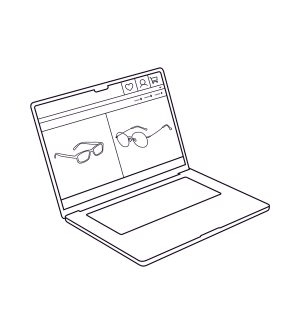Do you know the difference between an eye exam and a vision test?
Author: Alexander Martin, OD FAAO
When it comes to eye care, understanding the difference between an eye exam and a vision test can help you make better decisions for your health. At Eyebot, we combine technology and doctor oversight to ensure accurate, accessible, and reliable care for everyone.
LEARN MORE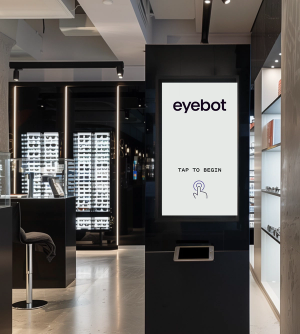
What Is an Eye Exam?
A comprehensive eye exam is a full evaluation performed by an optometrist or ophthalmologist. It includes everything a vision test does but also assesses the overall health of your eyes and can detect underlying medical conditions.
Key Features of an Eye Exam:
- Performed by a licensed eye doctor.
- Includes a vision test and a full health assessment.
- Checks for eye diseases like glaucoma, cataracts, and macular degeneration.
- May involve pupil dilation, retinal imaging, and intraocular pressure tests.
- Can detect signs of systemic health conditions like diabetes and hypertension.
Both the American Optometric Association (AOA) and the New England College of Optometry (NECO) recommend regular comprehensive eye exams—every one to two years, depending on your age, risk factors, and whether you wear corrective lenses.
What Is a Vision Test?
A vision test is a quick and focused assessment of how well you see. It primarily measures visual acuity (how sharp your vision is) and detects refractive errors like:
Nearsightedness (myopia)
If you have nearsightedness, also called myopia, objects close to you look clear, but things far away look blurry.
Why it happens: This happens when the eyeball is too long, or the cornea (the clear front part of the eye) is too curved and creates too much power. Instead of landing perfectly on the retina, light focuses in front of it, causing distant objects to look fuzzy.
Example: Imagine you’re sitting in the back of a classroom, and you can’t read the board, but you can easily see the words in your notebook. That’s nearsightedness. How to fix this? Glasses or contact lenses with a minus (-) prescription help refocus the light so distant objects become clear.
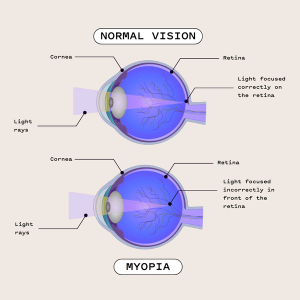
Farsightedness (hyperopia)
With farsightedness, or hyperopia, faraway objects may be clear, but close-up objects (like a book or phone screen) look blurry.
Why it happens: The eyeball is too short, or the cornea is not powerful enough, it is not curved enough. This makes light focus behind the retina instead of directly on it.
Example: If you struggle to read a book but can see a street sign clearly in the distance, you may be farsighted. How to fix this? Glasses or contact lenses with a plus (+) prescription help bring close-up objects into focus.
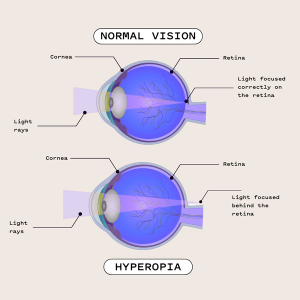
Astigmatism
Astigmatism makes everything look slightly blurry or stretched out, whether it’s near or far.
Why it happens: Instead of being round like a basketball, the cornea is shaped more like a football, which bends light unevenly. This means light does not focus on the retina evenly leading to the distortion.
Example: A streetlight at night might look stretched, with streaks of light coming out of it, or letters on a page may look wavy or double. How to fix? Special toric glasses or contact lenses reshape how light enters the eye, making vision clearer.
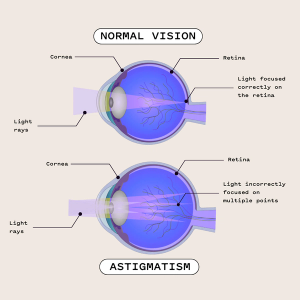
Presbyopia (age-related difficulty with near vision)
Presbyopia is when it gets harder to see things up close, usually starting around age 40. Even if you’ve never worn glasses before, you might suddenly struggle to read small print or need to hold things farther away to see them clearly.
Why it happens: As we age, the lens inside the eye stiffens and loses flexibility. A younger lens can easily change shape to focus on near objects, but an older lens struggles to adjust.
Example: If you find yourself holding a menu or your phone at arm’s length to read it, you may have presbyopia.
Fix: Reading glasses, bifocals (glasses with two focus areas), or progressive lenses help by bringing near objects into focus.
A vision test is a quick and efficient way to evaluate your eyesight and determine if you need corrective lenses. These tests focus on visual clarity and refractive errors like nearsightedness, farsightedness, or astigmatism.
At Eyebot, we’ve streamlined this process with our 90-second vision test, which offers:
- Accurate prescription updates.
- Results reviewed and verified by a licensed doctor to ensure reliability.
While vision tests are ideal for updating your prescription, they don’t replace the comprehensive health checks provided by a full eye exam.
Technology and Expertise: The Eyebot Advantage
Eyebot isn’t about choosing between technology and doctors—it’s about combining the best of both. Our kiosks use advanced technology to make vision testing more convenient, while our licensed doctors provide the critical oversight that ensures accuracy and trust.
Why this matters:
- Convenience: Quick tests that fit into your schedule.
- Accuracy: Every result is verified by a doctor.
- Accessibility: Kiosks in high-traffic locations bring care closer to you.
By combining technology and professional expertise, Eyebot is helping to close the gaps in vision care.
When to Use a Vision Test vs. an Eye Exam
Here’s how to decide which is right for you:
- Vision Test: Great for quick updates to your prescription when your vision feels stable.
- Eye Exam: Necessary if you’ve noticed changes in your vision, have a family history of eye disease, or haven’t had a comprehensive checkup in over two years.
At Eyebot, we’re making vision care straightforward. Our blend of technology and medical expertise allows you to stay on top of your vision without unnecessary hassle. Whether you’re updating your glasses prescription or checking your overall eye health, we’re here to help.
To learn more about eye exams and vision care, visit trusted sources like the American Optometric Association and the New England College of Optometry.
Stop by one of our kiosks today and see how simple vision care can be.
